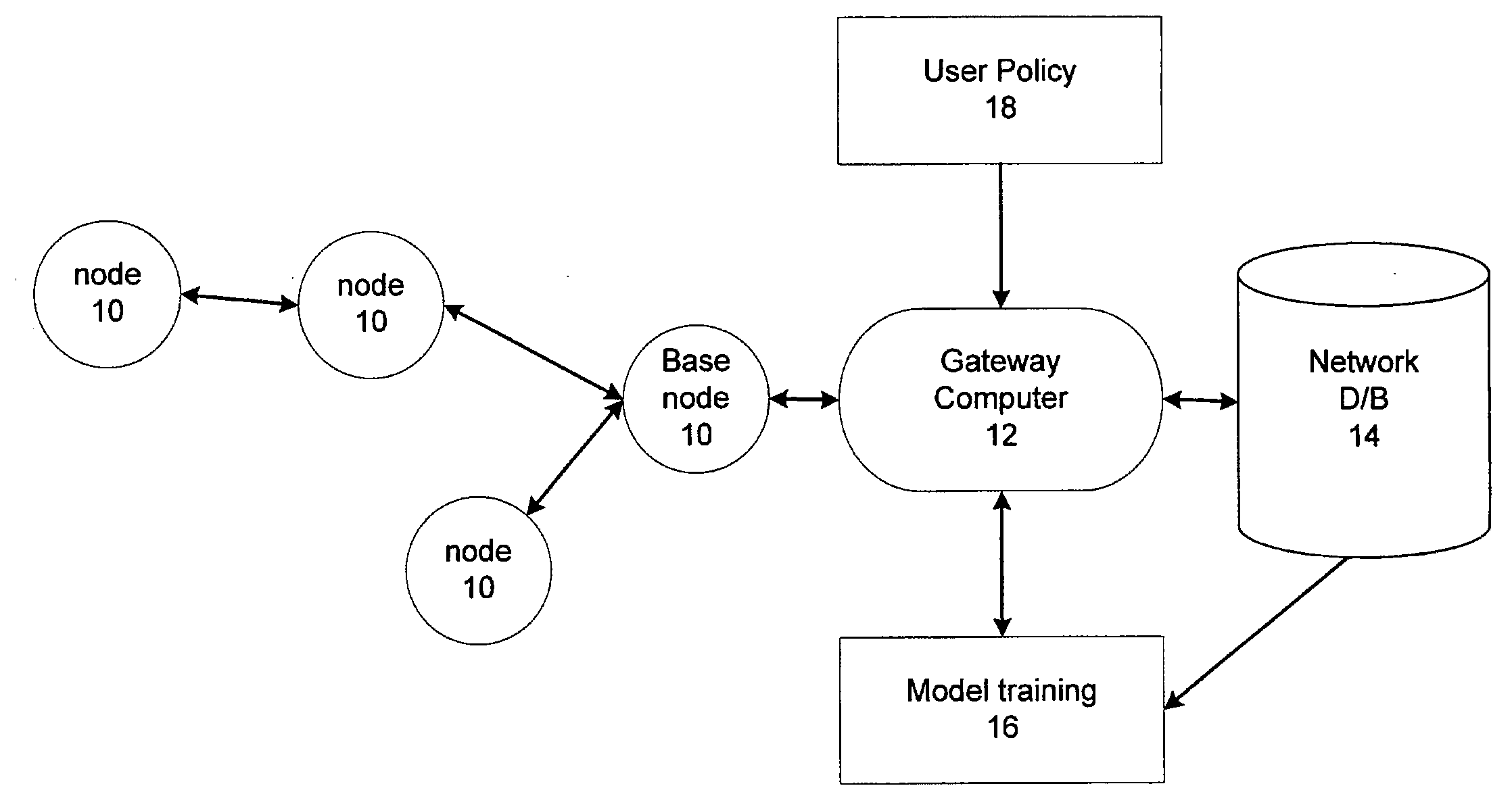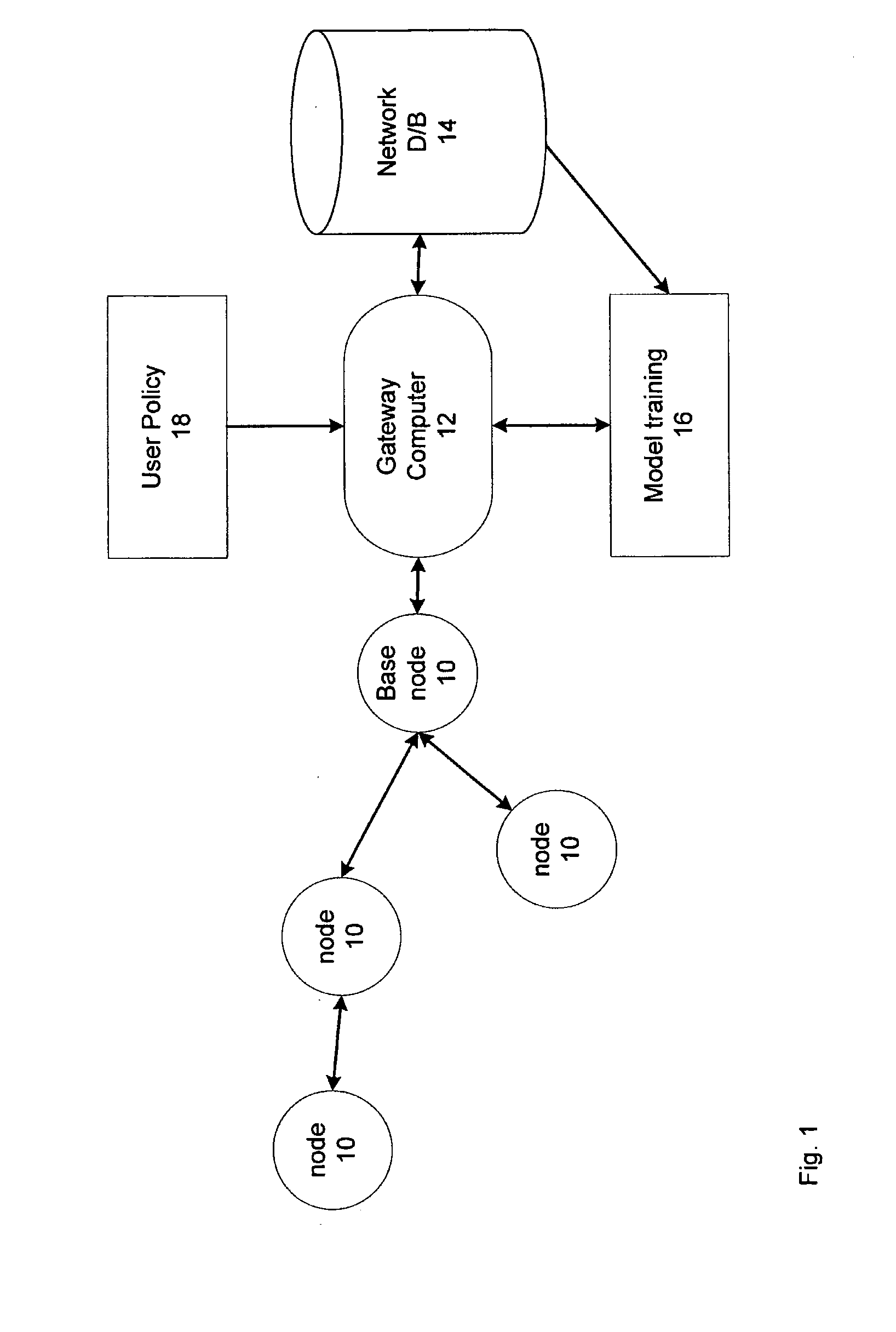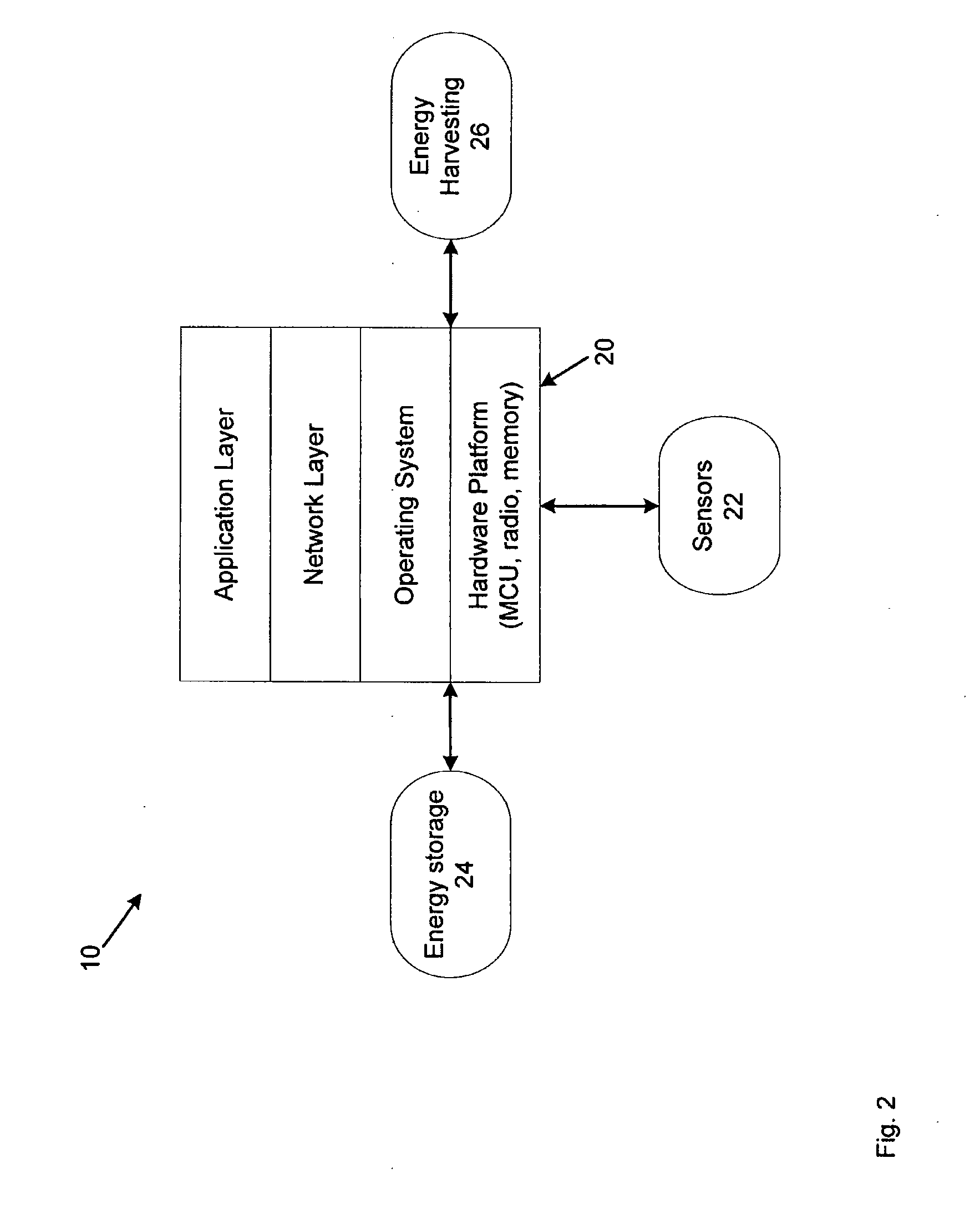Energy management for wireless sensor networks
a wireless sensor and energy management technology, applied in the field of remote sensor networks, can solve the problems of not necessarily returning the most useful range of information from the node during the lifetime, and achieve the effects of sufficient energy, time-consuming and expensive, and typically unpredictable energy harvesting
- Summary
- Abstract
- Description
- Claims
- Application Information
AI Technical Summary
Benefits of technology
Problems solved by technology
Method used
Image
Examples
Embodiment Construction
[0047]Referring first to FIG. 1 an array of multiple sensor nodes 10 are deployed to collect sensor data. The nodes 10 communicate in multi-hop fashion to deliver the data along a reporting path to a gateway computer 12 at the network hub. The data is subsequently stored in a historical record at a backend database 14 connected to the gateway computer 12.
[0048]Based on the historical data, an offline learning and training model 16 learns patterns in the historical data. The patterns are then used to identify the various physical phenomena that can occur in the current deployment, and these phenomena are each mapped to a finite set of sensor states. The training model 16 also learns the likelihood, of each sensor 10 being in each of their states.
[0049]A sensor network user then sets a desired application policy 18, which includes any one or more of at least the following:[0050]The network lifetime.[0051]The maximum and minimum sampling rates of each type of sensor.[0052]The possible ...
PUM
 Login to View More
Login to View More Abstract
Description
Claims
Application Information
 Login to View More
Login to View More - R&D
- Intellectual Property
- Life Sciences
- Materials
- Tech Scout
- Unparalleled Data Quality
- Higher Quality Content
- 60% Fewer Hallucinations
Browse by: Latest US Patents, China's latest patents, Technical Efficacy Thesaurus, Application Domain, Technology Topic, Popular Technical Reports.
© 2025 PatSnap. All rights reserved.Legal|Privacy policy|Modern Slavery Act Transparency Statement|Sitemap|About US| Contact US: help@patsnap.com



